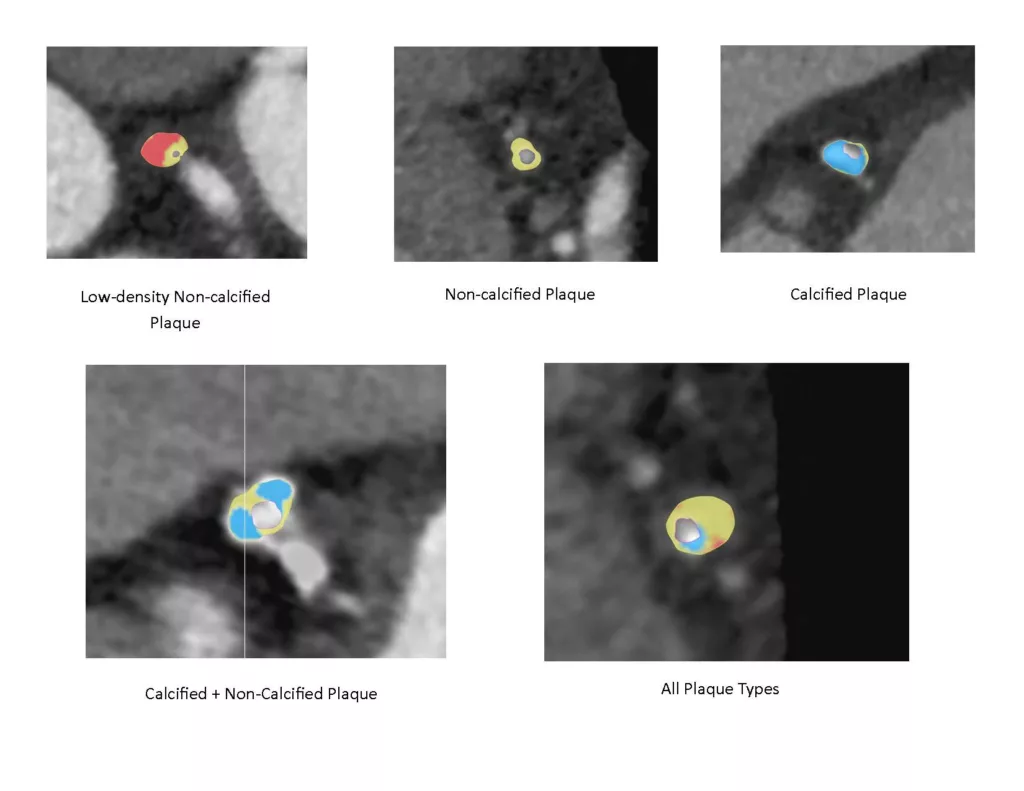State of the Art Cleerly Coronary Analysis To Detect Artery Plaque
by Mila McManus MD

Our medical providers often refer patients for coronary artery calcium [CAC] scans which are used to detect and quantify atherosclerosis [hardened and calcified plaque]. There have been several peer reviewed papers, including ICONIC,[1] PROMISE,[2] and SCOT-HEART,[3] confirming that accumulation of plaque within the arteries is the strongest predictor of a heart attack.
The healthcare system misses more than half of patients who appear to be the picture of health but suffer a heart attack. In other words, more than half of the people who suffer from a heart attack do so without any symptoms! [4] Though a CAC scan is affordable and significantly more informative than a stress test, even the CAC scan misses the buildup of non- calcified plaque. More alarming is that 70% of heart attack victims are considered low risk by traditional methods of assessing heart disease. [5] Conventional methods are only identifying a small portion [30%] of people who could have a heart attack at any moment. Stress testing, one of the most conventional methods, misses 75% of the lesions responsible for heart attacks. [6]
Researchers have found that there is more than one kind of plaque, some creating a higher risk for heart disease than others. The more immediate risk lies in softer, non-calcified plaque which is not detected through the CAC scan. The good news, however, is that through a newer, state of the art non-invasive coronary computed tomography angiography, or CCTA analysis with Cleerly artificial intelligence technology, these higher risk plaques can be identified. The CCTA+Cleerly analysis is the first approach that may truly prevent heart attacks by detecting the largest predictor of heart attacks: the high risk soft plaque. This analysis has proven superior to the CAC scan over 2, 5, and 10 year periods in one study. [7]
While our practitioners will continue to encourage our patients to get the CAC scan for its affordability and increased insight to potential disease that cannot be determined by a stress test, we are very excited about the CCTA analysis through Cleerly Health. While more costly, the analysis can provide more precise and comprehensive information needed to prevent a heart attack. The CAC scan cannot detect and quantify low-density, non-calcified plaque, which is more likely than hardened and calcified plaque to rupture and cause a potentially fatal blood clot.[8] Furthermore, several studies have concluded that the CCTA+Cleerly analysis shows coronary atherosclerosis in 41-53% of patients with a CAC score of zero. CCTA+Cleerly analysis also provides physicians with calcium scoring, making the CAC scan unnecessary when the CCTA analysis is used.
Whether or not you have high cholesterol or a family history of heart disease, talk to your healthcare provider about the Cleerly Health CCTA analysis. It could save your life!
Be proactive. Be Well.
References:
[1] Coronary Atherosclerotic Precursors of Acute Coronary Syndromes. Journal of the American College of Cardiology. June 5, 2018.
[2] Prognostic Value of Coronary CTA in Stable Chest Pain: CAD-RADS, CAC, and Cardiovascular Events in PROMISE. Journal of the American College of Cardiology. July 13, 2020.
[3] SCOT-HEART Trial: Reshuffling Our Approach to Stable Ischemic Heart Disease. British Journal of Radiology. September 1, 2020.
[4] Benjamin E.J. et al. Circulation 2019.
[5] Chang, H.J. et al. Journal of American College of Cardiologists. 2018.
[6] Akosah K.O. et al. Journal of American College of Cardiology. 2003.
[7] Nurmohamed, N.S. et al. AI-Guided Plaque Staging Predicts Long-Term CVD. JACC: Cardiovascular Imaging. 2023.
[8] The Fallacy of the Power of Zero. Journal of the American College of Cardiology: Cardiovascular Imaging. June 2022.



